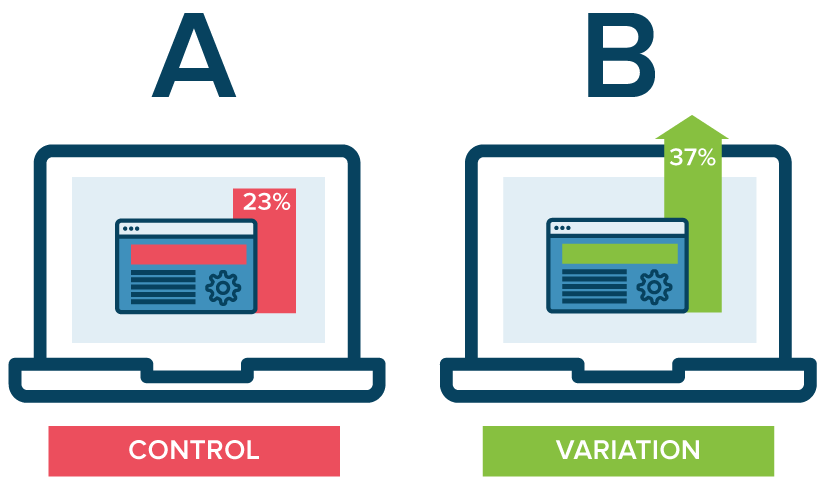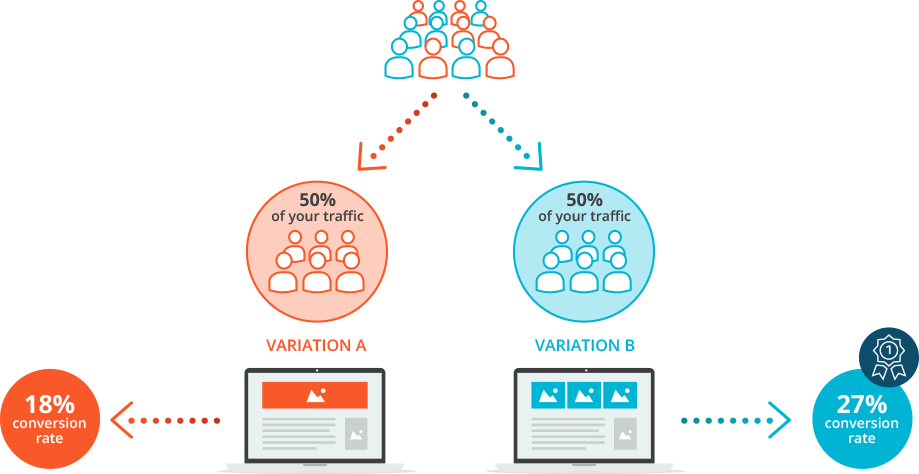Run an A/B Split Test on Your Website
Run an A/B Split Test on Your Website
A/B and user testing is key.
In my past life working for agencies and directly with brands, we tested new creatives every two weeks. By constantly running these tests, we were able to better understand which exact wording drove people to click ads (given all the competition on the SERP) and identify the best combination of ad elements when it comes to CTR and CVR.
1. Preparation – Measuring Success
When it comes to user testing, it’s crucial to outline measurement KPIs to understand what a successful test looks like. For example, is the end goal to drive incremental conversions and/or revenue, a specific ROI that the test objects have to hit, or traffic growth (impression share, clicks, etc.)?
Having a clear picture of success will make analysis a lot easier, and help you quickly identify your test winner. A/B testing is similar to user testing, both give you a clear direction in what’s working on your website and what needs improving.

2. Execution – Plan of Action
Once you’ve solidified your methodology and elements, it’s time to set up the test.
While you have various implementation options at your disposal, one way to run a PPC test is with Google’s drafts and experiments. According to Google, using drafts and experiments “lets you propose and test changes to your Search and Display Network campaigns.”
Drafts and experiments campaigns mirror selected campaigns and create a complete duplicate (draft), where you can change test variables.
Once you’re happy with the changes and testing object within the campaign, convert the draft into an experiment and make it live.
There are a few thing to keep in mind when you’re launching an experiment campaign for A/B tests.

a) Gather Historical Data
Since experiment campaigns are created from scratch, you won’t have any historical data (i.e., quality score). So, to make sure you run an accurate test against the existing setup, allow at least two weeks for the experiment campaign to gather historical data.
b) Use the Right Parameters
Depending on the tracking solution you’re using, review the elements you track and attribute on. Experiment campaigns are created by mirroring existing (i.e., control) campaigns, and objects like keywords and creatives will have duplicate publisher IDs.
Some advertisers use the {creative} Google ValueTrack parameter for the creative ID to attribute conversion data at the creative level. In this case make, sure you ‘recreate’ your ads for the experiment campaign before launch, to generate unique publisher IDs.
c) Select the Right Budget Split
Google Ads allow advertisers to select a budget split between their control and experiment campaigns. While many advertisers select a 50/50 split, keep in mind that various factors may affect the actual split during your test.
For instance, impressions / clicks / cost data will never 100% match the selected budget split, since the settings allow you to only split spend and not the SERP auction. Also, campaign settings won’t cap your campaign budgets, and in some cases the traffic split may shift toward one of the tested campaigns.
By way of example: one of our clients decided to test two different bidding strategies in their accounts. While we initially selected the campaign’s budget split as 50/50, over time, traffic (impressions, clicks, and cost) shifted to the experiment campaign, since the LTV assigned to conversions in the campaign was much higher. This resulted in higher bid calculations and higher traffic volumes.
3. Analysis – Critique and Improve
Well done—you’re now on the finish line of your first test!
If you prepared well, this step will be nice and easy. You already know which metrics you’re aiming to improve, so simply download data for your control and experiment campaigns and review the results based on your KPIs.

The next step: prepare for your next test, analyze the results, and keep improving your accounts.
Hire ThePixel to build your next website!
Since our founding in 2008, we’ve created and launched many types of business websites. Over the last decade and we’ve learned a thing or two! That’s why we’re masters of our craft, let us help you build the website of your dreams – one that generates traffic, leads and conversions.
Are you ready to start? If yes, contact ThePixel and one of our representatives will guide you through the website phases and how the process works either by a Zoom Meeting or phone.


